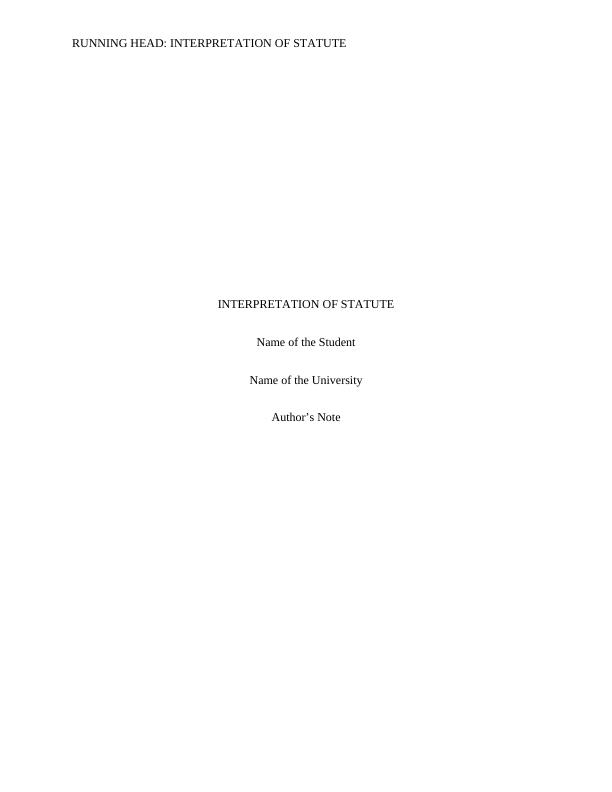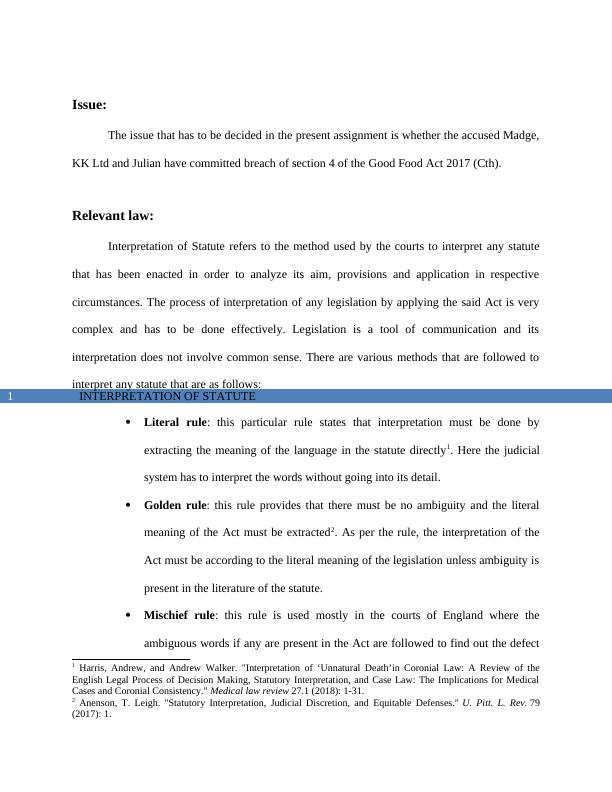Interpretation of Statute
7 Pages1502 Words244 Views
Added on 2022-11-19
About This Document
This assignment discusses the methods used by the courts to interpret any statute that has been enacted in order to analyze its aim, provisions and application in respective circumstances.
Interpretation of Statute
Added on 2022-11-19
ShareRelated Documents
End of preview
Want to access all the pages? Upload your documents or become a member.
Interpretation of Statutes
|9
|2192
|215
Interpretation of Section 4 of Good Food Act 2017 (Cth)
|9
|2411
|303
Business Law: Interpretation of Statutes and Exclusion Clauses
|7
|1628
|256
Civil Law
|6
|1184
|62
Business Law: Interpretation of Statutes and Exclusion Clauses
|6
|1342
|344
Statutory Interpretation: Overview, Principles, and Application
|9
|2379
|46



